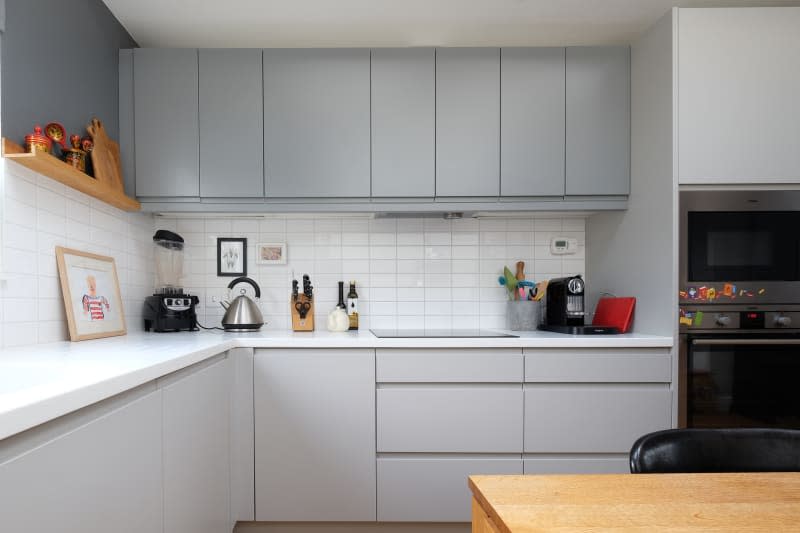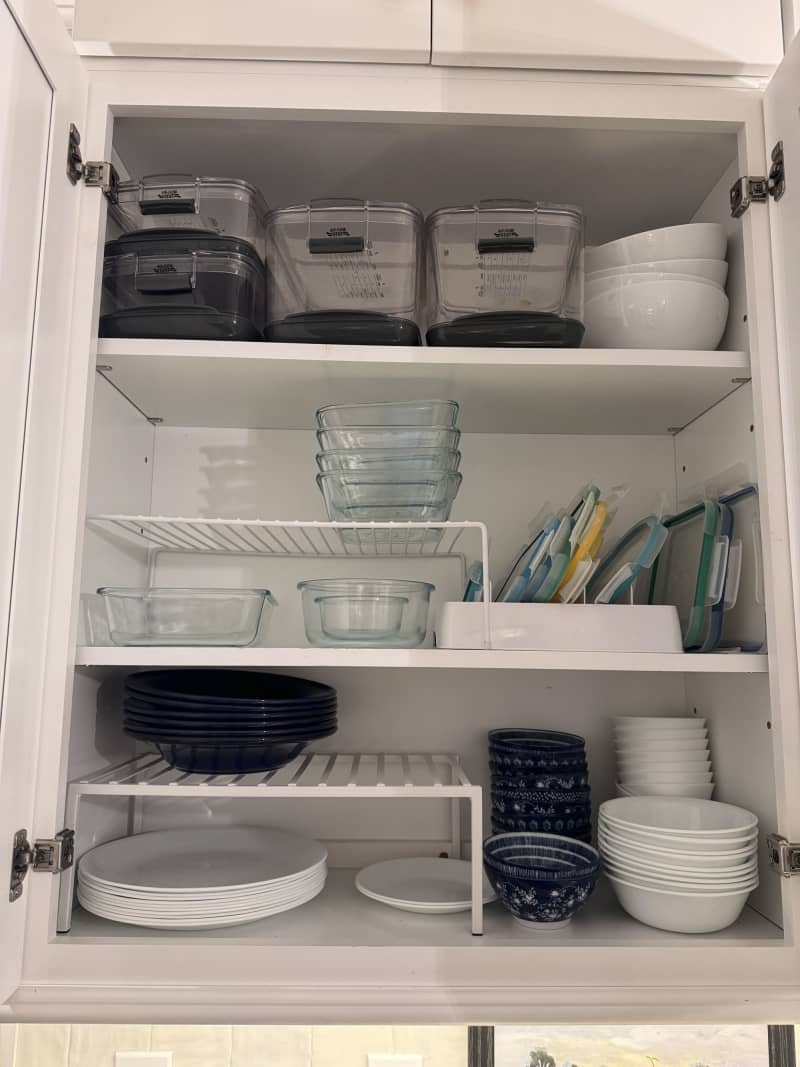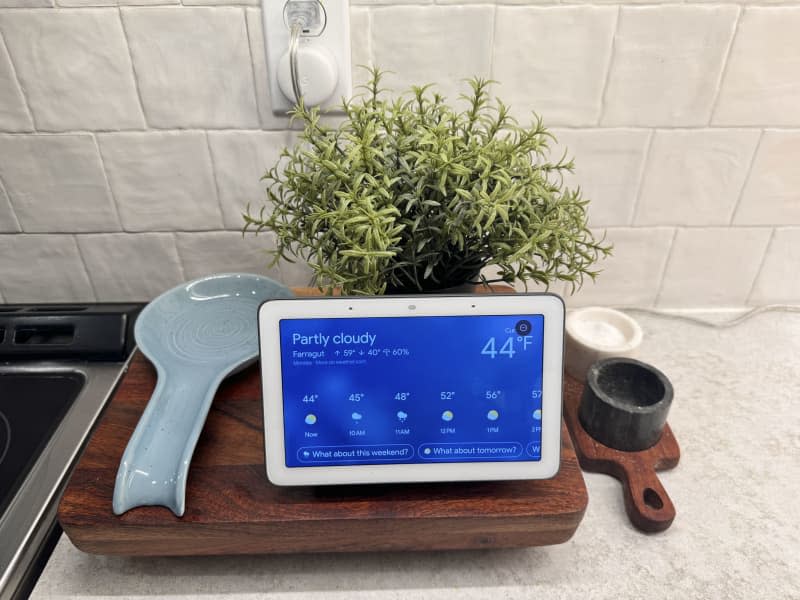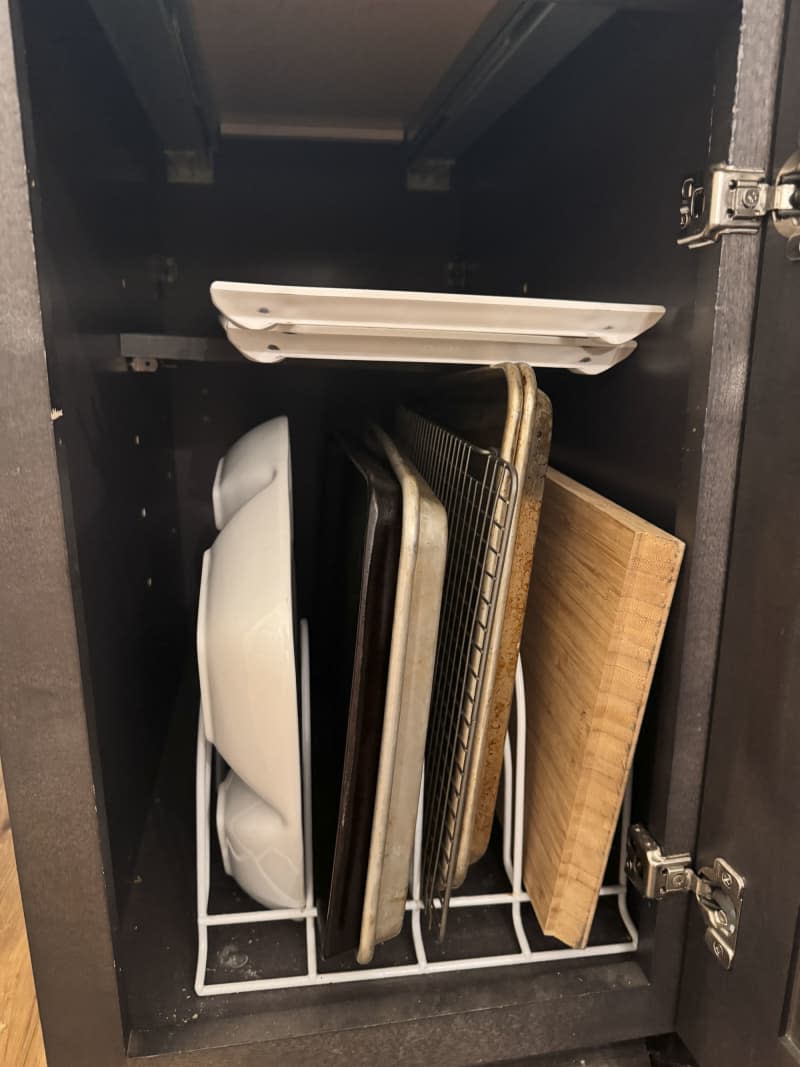9 Ways to Make Your Kitchen Look Less Cluttered (and More Stylish)

Minimalism isn’t just a style preference — a simple, less cluttered home has a huge impact on the stress levels of those who inhabit them. Anthony Ongoro, creator of Break the Twitch and an expert on minimizing distraction to find the “flow,” defines the movement this way: “Minimalism is all about owning only what adds value and meaning to your life and removing the rest.” Essentially, less clutter means less overwhelm. Even a “maximalist” home benefits from the order and calm that comes from reducing clutter — and no matter your aesthetic preferences, less clutter means more style.
No one puts this into practice more than professional organizers and home stagers. To find out how the experts make kitchens look less cluttered and more stylish, and thereby create flow in such hardworking spaces in the home, I turned to home stager and designer Shirin Sarikhani of Seattle Staged to Sell & Design. Here are her top tips for making your kitchen look less cluttered and more chic.

1. Start with cupboard organization.
Many clutter-free kitchen suggestions focus on clearing the counters of clutter, and while clear counters are definitely an important component of a clutter-free kitchen, Sarikhani points us first to the cupboards. “Organized and edited cupboards are key,” she says, explaining that if cupboards are “packed to the brim with all of those big Costco shopping items, there will be an overflow of ‘stuff’ on your counters.” Here are some of The Kitchn’s favorite pantry organizers and tips.
2. Create visual flow.
According to Sarikhani, “creating a flow is the key to any space that is designed well.” But what exactly does that entail? “A flow starts with repeating one or more elements in the house and room. A color, a texture, or a style, like a retro feel,” she explains. “Studies show that our brain produces serotonin when it sees repeated elements. This harmony is another way to visually create a decluttered feel and more of visual ‘comfort.’”
3. Coordinate appliances that are left out.
Not everyone is going to be able to (or want to!) put all their small appliances away. For those that remain out on the counters, coordinating them is key to a clutter-free feel in the kitchen. “Your appliances that have to be on the counters should be similar in style and color as much as possible,” Sarikhani advises. “For example, I have a cream Smeg electric kettle, toaster, and a KitchenAid mixer on my counters. My kitchen cabinets are cream and this is an example of a repeated color.”
4. A place for everything.
Sarikhani reminds us of the classic rule for decluttering: Have a designated space for each of your possessions. “A visually decluttered kitchen starts by having an identified space for everything you have,” she states. Once you’ve identified the spaces, she suggests using baskets for organizing, noting they “add visual interest and create more storage and a feel of organization.”

5. Create collections.
Another strategy for making the kitchen look less cluttered, Sarikhani shares, is by creating collections. Collections corralled on trays makes smaller items look deliberate rather than haphazard. “A tray on the counter housing the smaller items looks more organized and decluttered,” she explains.
6. Organize interior spaces.
In addition to making sure overly full kitchen cabinets aren’t contributing to clutter on your counters, pay attention to organization within your cupboards and fridge to create more space and less clutter. “Inside of your fridge, you can use storage baskets or bins to create more space and organization. These will work like drawers,” Sarikhani says. “For example, you can have a container or basket for all of your cheeses and one for your cold cuts and meat so you can easily pull them out and put them back.”
She also recommends using divider racks inside of your cupboards for cooking trays and cutting boards and, where possible, using pull-out wire racking systems inside cabinets as well as stationary wire racks so that “your glasses, dishes, and spices can be organized and be stacked without the hassle.”

7. Make use of empty spaces.
To remove clutter from work areas, consider using vertical space and other under-utilized areas for storage. For instance, Sarikhani suggests “using a hanging pot holder if you have pretty or matching pots and pans” to add visual interest and a repeated theme. Additionally, she notes that a pretty wall spice rack will add interest and free up a drawer or cupboard. For example, “Sometimes there is a big space or gap between the kitchen counter and the bottom of the wall cabinets. You can add a narrow shelf to house glasses or spices.”
Don’t forget about empty space above your cabinets or fridge, which can also be used for out-of-the-way storage of lesser-used items. Sarikhani explains how she uses this space in her own kitchen: “Above my fridge, there is a gap and I have a big storage basket that houses all of my baking tools. When I’m baking, I just bring it down and it’s easy and efficient.”
8. Be strategic with open shelving.
Items stored on open shelving require special attention to keep from looking cluttered. Sarikhani explains that “it is important to have harmony by having similar items, though you can mix them up. Like having white dishes, green glasses, and white and green mugs,” reminding us to “remember the flow.”
9. Store utensils thoughtfully.
When it comes to utensils stored out on the counter, Sarikhani reminds us to keep it simple by storing only the “main and most-used utensils.” She suggests using “decorative containers, maybe in different heights, to store your utensils,” and to try to have them be the same material. “I have two large cream ceramic vases in two different heights for my home. One holds my metal utensils and one holds my wooden ones. The separation of the two looks more orderly and less cluttered.”
Creating a less cluttered and more stylish kitchen isn’t just for looks — strategies like repeating visual elements, reducing the amount of items you bring into and store in your kitchen, and maximizing storage potential, don’t merely make your kitchen more beautiful. They also increase flow and, ultimately, make the kitchen a more calm and pleasant place to spend your time.
